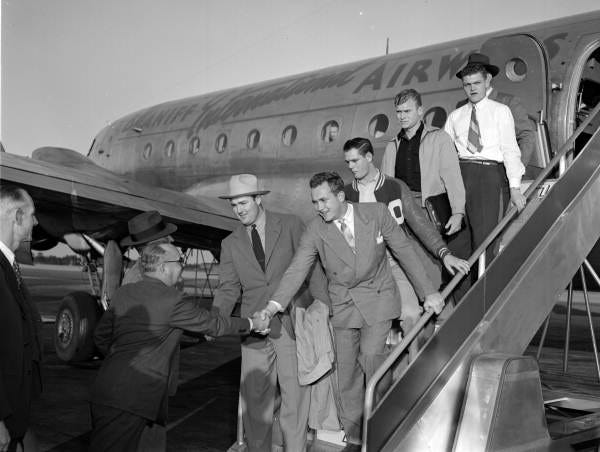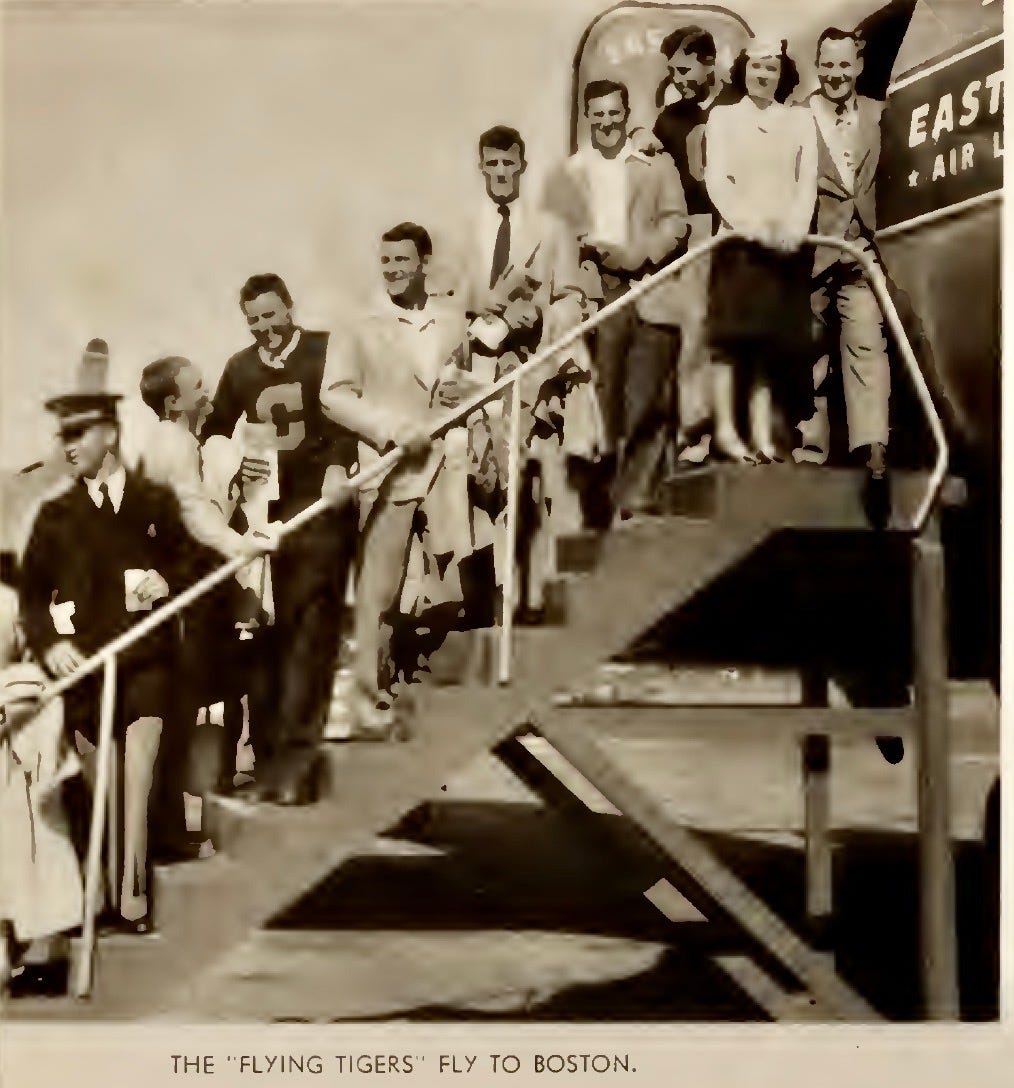Trains, Planes, and Football Conferences
The Big Ten will soon stretch from sea to shining sea, a feat the FCS Pioneer Football League has performed since 2001. Still, the history of athletic conferences is one of colleges and universities organizing regionally, going back to a handful of Eastern schools forming the Intercollegiate Football Association. The IFA defined the game's playing rules until the NCAA's predecessor seized control in 1906.
The NCAA did not become involved in eligibility and similar standards until the late 1940s-early 1950s. Conferences played that role by setting eligibility standards among like-minded schools; their role in scheduling games among conference members came decades later. For example, the Big Ten spent decades with each school scheduling their games independently. Most played anywhere from three to seven conference games per year, and even in 1960, Michigan's AD, Fritz Crisler, argued against the plan to require seven conference games per year. Crisler believed that conference membership was based on shared values, not schedules.
So, in the days before conference scheduling requirements, which coincided with large numbers of independent schools, the primary driver of football schedules was the nation's railroad network. There is no getting around railroads being the only method of getting around back then. Railroads were a primary determinant of who, where, and when you played until the 1950s.
Transportation costs and the time required to get from point A to point B meant early teams overwhelmingly scheduled teams in their region. For example, many top Eastern games occurred in Springfield, Massachusetts, or New York City. Both enjoyed excellent rail connections that allowed the teams and alums to get to the games, and the traditional 2:30 PM or 3:00 PM starting times for games allowed everyone to travel to the game that morning.

Long-distance travel for games was exceedingly rare. Schools in the "East" played only thirteen games against those on the West Coast before WWI, with the first regular-season game coming in 1915.
Trips across the continent were four or five-day affairs as late as the 1920s and 1930s. Consider, for example, Penn's itinerary when it traveled west for a New Year's Eve game at Berkeley in 1927. Penn spent four days speeding across the country before staying in Berkeley for nine days to practice. After playing their game, they headed to Pasadena to watch the Rose Bowl and then headed home, arriving in Philadelphia on January 7th, twenty-two days after they left. Besides the Rose Bowl, they made one sightseeing stop en route, but the travel time points to the challenges of scheduling intersectional games, particularly during the regular season.

Notre Dame and USC started football's first long-distance rivalry in 1926, and they played most of their early games as the last game of the season to allow for cross-country travel. Still, as commercial airlines took wing in the late 1920s, prognosticators foresaw air travel's impact on college football schedules. Knute Rockne himself, an aviation enthusiast who had ridden the rails west a few times, argued in 1929 that:
It's just a question of a very short time before football teams will travel by airplane in order to effect an untold savings in hours. Teams in the East can hop a plane, play on the Pacific coast (sic) with very little loss of time, and get back to their institutions a day or so later, and then probably be ready for a contest in another section perhaps the next week-end.
Rockne's prediction began to come true that year when New Mexico traveled to Occidental in Los Angeles for what is thought to be the first time a college football team flew to a game. (Military football teams did so during and after WWI.). Likewise, Kansas flew to Penn in 1930, while Villanova took the train to Miami and then flew the Pan American Clipper to Havana to play Auburn on New Year's Day in 1937. Finally, Michigan's flight(s) to Berkeley for the 1940 season opener was likely the longest pre-WWII trip by air by a football team.

Buses and trains remained the primary means of teams getting from here to there in the 1950s, but air travel increasingly allowed teams to schedule intersectional games while classes were in session. Things almost went to the next level when the Airplane Conference entered the national discussion in the late 1950s.
Conversations about the Airline Conference took off after several cheating scandals, and mistrust of conference leadership led to the breakup of the Pacific Coast Conference in 1957 when Cal, UCLA, USC, and Washington left the conference. With those schools as free agents, the door to a national conference opened wide. Tom Hamilton, the former Navy and Pitt coach who was Pitt's AD in 1958, proposed forming the Airplane Conference. An East Division of Army, Navy, Notre Dame, Penn State, Pitt, and Syracuse would be joined by a West Division featuring Air Force, Cal, Stanford, UCLA, USC, and Washington. Rumors swirled, various school officials confirmed or denied the talks, and the Big Ten looked for a place to play on New Year's Day not named Pasadena.
It was an exciting idea enabled by the magic of flight, but the Pentagon told the academies they were not interested, so the Airplane Conference never got off the ground. As a result, the last hope for a coast-to-coast major college football conference was gone until now.
The professional sports leagues have since proven the feasibility of national scheduling, and even they retain regional divisions for several reasons, so tradition and student time away from campus were the only reasons other than money not to go national. However, with television or streaming revenues removing the money barrier, college football will continue its evolution. Conferences and scheduling will go round and round, and where they land, nobody knows, other than they will land at many airports.
Another story on intersectional play is below.
Football Archaeology is reader-supported. Click here to buy one of my books or otherwise support the site.




